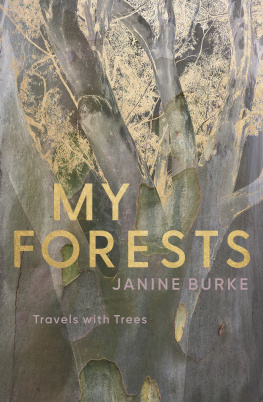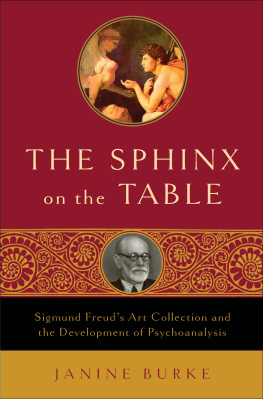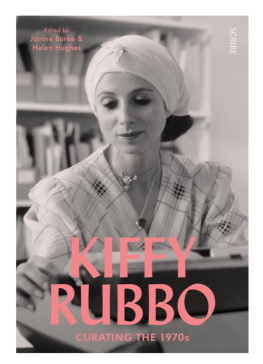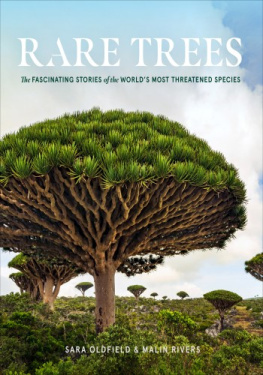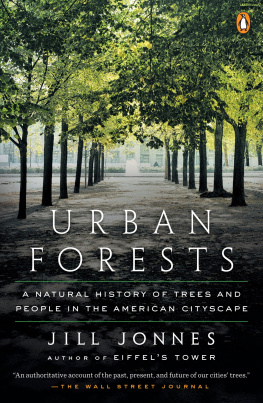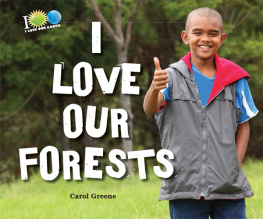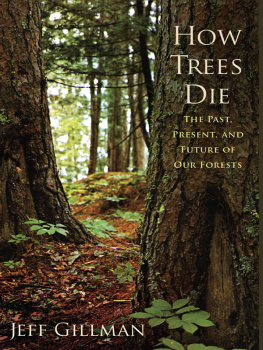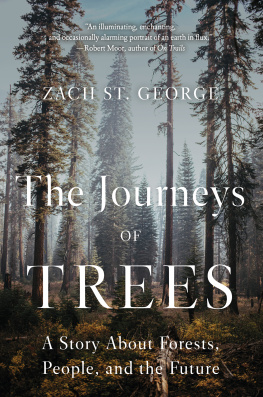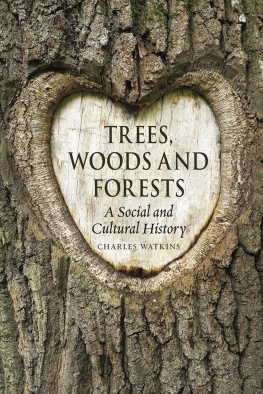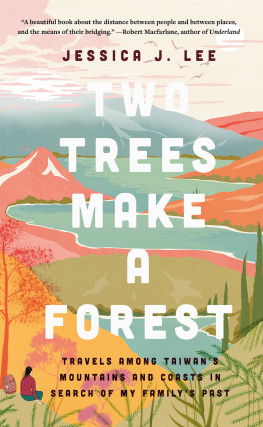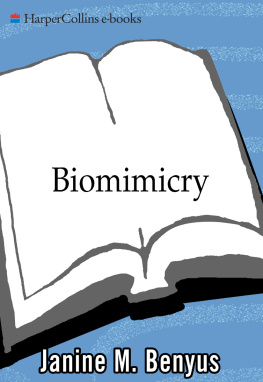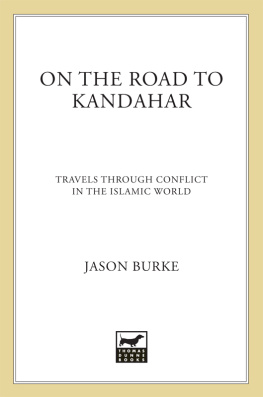Janine Burke - My forests : travels with trees
Here you can read online Janine Burke - My forests : travels with trees full text of the book (entire story) in english for free. Download pdf and epub, get meaning, cover and reviews about this ebook. year: 2021, genre: Detective and thriller. Description of the work, (preface) as well as reviews are available. Best literature library LitArk.com created for fans of good reading and offers a wide selection of genres:
Romance novel
Science fiction
Adventure
Detective
Science
History
Home and family
Prose
Art
Politics
Computer
Non-fiction
Religion
Business
Children
Humor
Choose a favorite category and find really read worthwhile books. Enjoy immersion in the world of imagination, feel the emotions of the characters or learn something new for yourself, make an fascinating discovery.
- Book:My forests : travels with trees
- Author:
- Genre:
- Year:2021
- Rating:3 / 5
- Favourites:Add to favourites
- Your mark:
- 60
- 1
- 2
- 3
- 4
- 5
My forests : travels with trees: summary, description and annotation
We offer to read an annotation, description, summary or preface (depends on what the author of the book "My forests : travels with trees" wrote himself). If you haven't found the necessary information about the book — write in the comments, we will try to find it.
My forests : travels with trees — read online for free the complete book (whole text) full work
Below is the text of the book, divided by pages. System saving the place of the last page read, allows you to conveniently read the book "My forests : travels with trees" online for free, without having to search again every time where you left off. Put a bookmark, and you can go to the page where you finished reading at any time.
Font size:
Interval:
Bookmark:
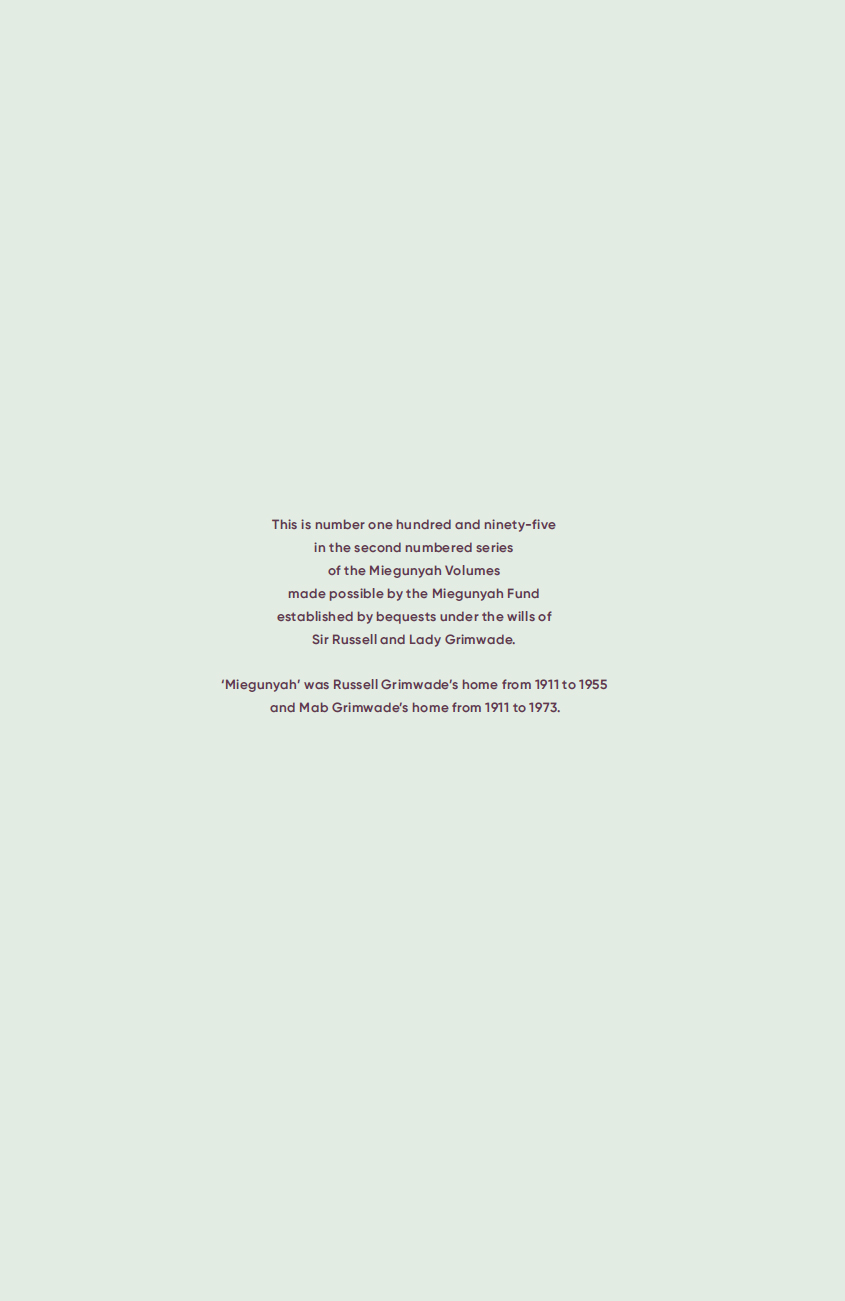
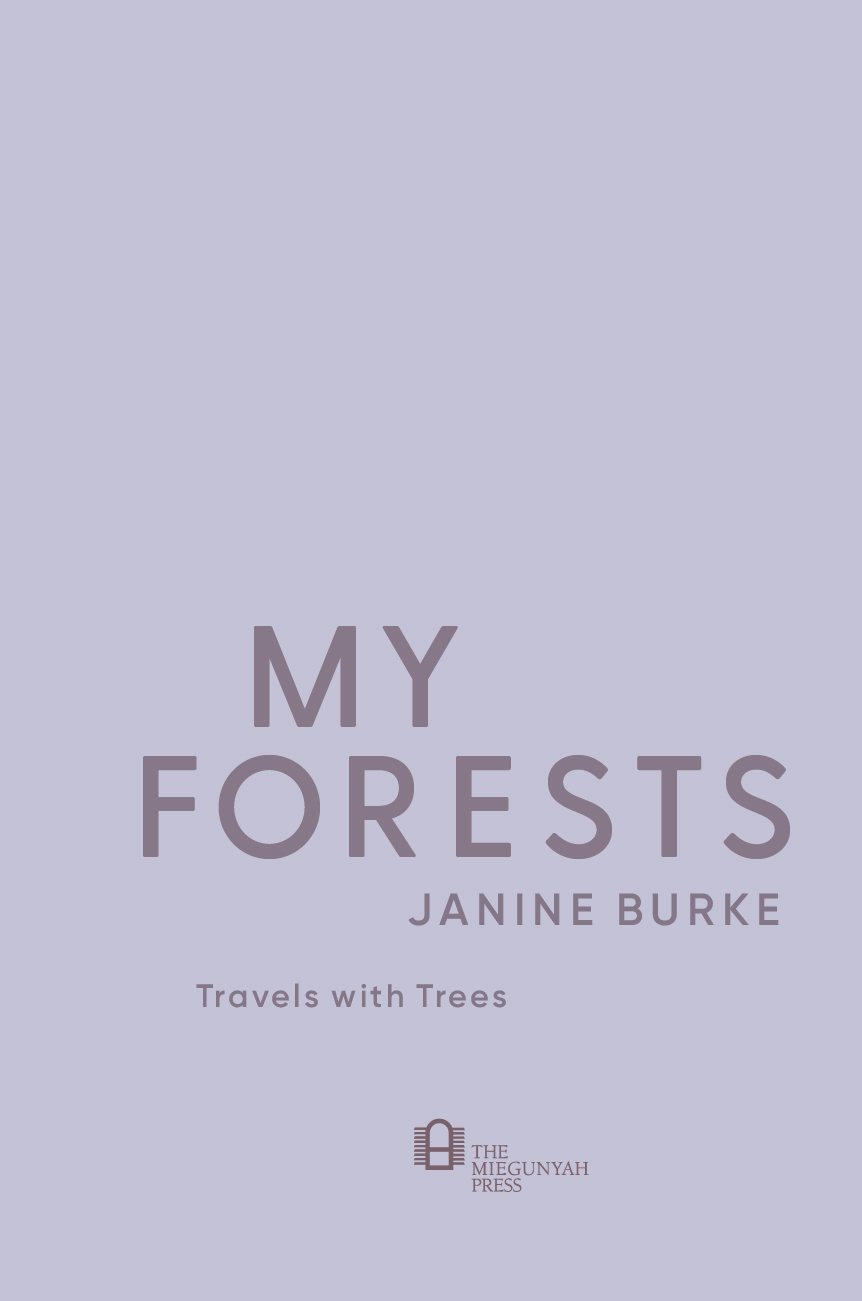
THE MIEGUNYAH PRESS
An imprint of Melbourne University Publishing Limited
Level 1, 715 Swanston Street, Carlton, Victoria 3053, Australia
www.mup.com.au

First published 2021
Text Janine Burke, 2021
Design and typography Melbourne University Publishing Limited, 2021
This book is copyright. Apart from any use permitted under the Copyright Act 1968 and subsequent amendments, no part may be reproduced, stored in a retrieval system or transmitted by any means or process whatsoever without the prior written permission of the publishers.
Every attempt has been made to locate the copyright holders for material quoted in this book. Any person or organisation that may have been overlooked or misattributed may contact the publisher.
Typeset in Bembo 12/15pt by Cannon Typesetting
Cover design by Pfisterer + Freeman
Printed in Hong Kong by 1010 Printing Asia Ltd

9780522877328 (hardback)
9780522877335 (ebook)
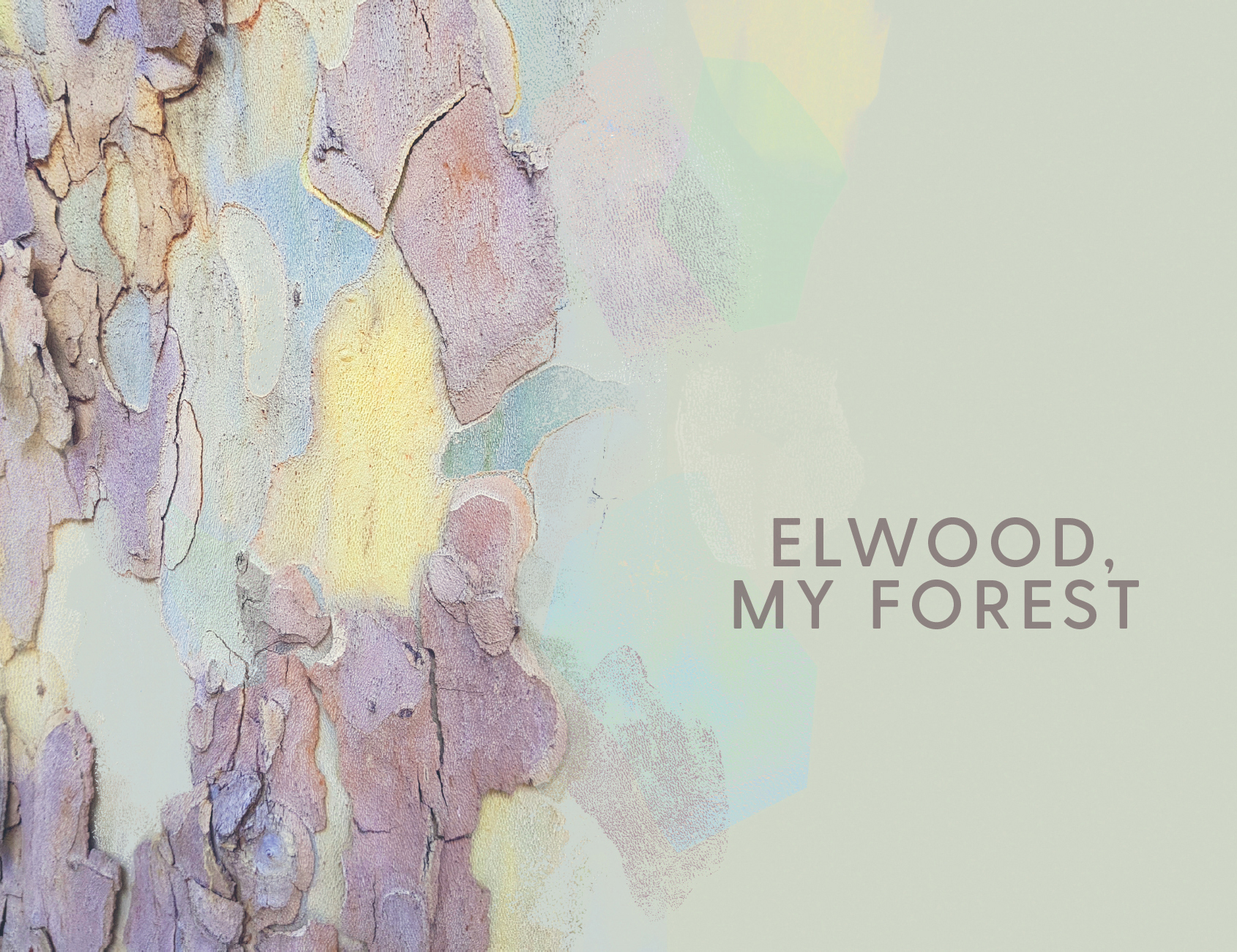
Y OU MIGHT BE wondering why an art historian is writing about trees. For those of you familiar with Nest: The art of birds (2012), its clear how this book came about. It grew from there. (Excuse the pun!) To spend time observing birds and nests is to spend time observing trees, especially those in Elwood, my neighbourhood, near Melbourne in south-eastern Australia. It made me realise how ignorant I was of their histories and journeys, of the extent of their impact on human and non-human cultures. How much we need them. If only the birds could answer our questions about trees! Their knowledge would be massive, detailed and practical, stretching beyond human memory.
Im not a country girl. I grew up in suburbia. So, like most people on the planet, my daily contact with nature is conditioned by urban planning, population demands and pollution. My environment is designed. I learn from what is around me and when I can visit wild places, its the opportunity to gaze into the past, at what my country once looked like. But that, too, is influenced by human occupation which began around sixty thousand years ago when Indigenous people, those brave pioneers, arrived here, all the way from Africa. They also designed nature.
Writing this book, my tree-memories began to return, a kind of botanical autobiography that anyone who admires trees is certain to havethe Eucalypt that grew outside my bedroom window and to whom, as an intense, imaginative seventeen-year-old, I confided my hopes and fears. The Olive grove that surrounded the house where I lived in Tuscany: it was as though the trees had been dancing and the moment of discovery froze them. Horse-chestnuts blooming in glorious fecundity along the boulevards of Paris. The Canary Island Palms of St Kilda, Elwoods raffish neighbour, that give the suburb its tropical holiday air.
As American essayist Oliver Wendell Holmes noted, I have a most intense, passionate fondness for trees in general, and have had several romantic attachments to certain trees in particular. If those sentiments strike a chord, please wander with me through forests, art and writing, civilisationssome past, some continuouscities and parks, swamps and sewers, around our globe, this precious Earth whom the trees help to breathe.
Lets start in Elwood.

When you turn into Elwood from Nepean Highway, you are embraced by green: the parks and the ovals entwine in flowing emerald arcs like large, protective gestures. Its like living in a nature reserve. The trees assist in giving Elwood its decidedly feminine air, its gentle, verdant appeal. Elwood is inhabited by a wide variety of trees: Eucalypts as well as Wattle, Bottlebrush, Ti-tree, Banksia, Apple, Sheoak, Moreton Bay Fig, Jacaranda, Pine, Ash, Peppercorn, Cypress, Date Palm, Silver Birch, Elm and London Plane. My Elwood forest is an urban hybrid. Youve probably noticed that Ive capitalised the trees names. I think its fitting. That is, after all, what theyre called. You wouldnt like it if, for example, you were called Jane Doe but I referred to you as jane doe. Some trees are already thus endowed but I feel they all deserve such distinction. Trees have evolved over millennia long before Homo sapiens and they continue to try to adjust to whatever we expect of them. They are history, growing before our very eyes. If that perspective annoys you (anthropomorphism I hear some of you muttering), you may not like the rest of this book and perhaps should desist from reading on.
Elwood ends at Port Phillip Bay, our placid sea, our aquamarine zone. In the distance, to the south, is Mount Martha and beyond that the distant Heads. Facing Elwood across the bay are the You Yangs, a series of granite ridges rising from a treeless plain near Geelong.
On the Point Ormond bluff which commands that view, the Yaluk-ut Weelam people of the Boonwurrung clans once harvested shellfish, hunted and camped. Thomas Clarks painting Red Bluff, Elwood (c. 1860, National Gallery of Victoria), as Point Ormond was then known, shows the golden-pink sandstone cliffs. When Clark painted the bluff, much of Elwood was a swamp.
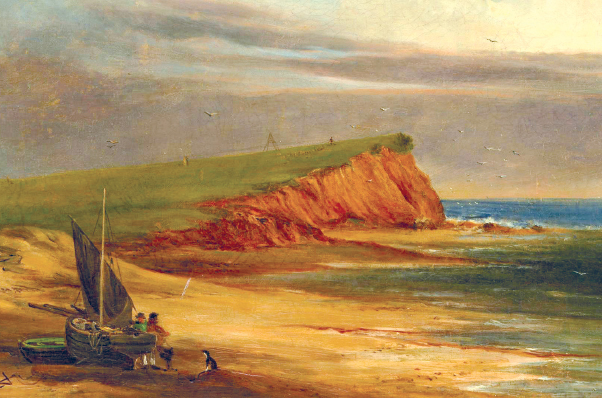
Red Bluff, Elwood, c. 1860, Thomas Clark, oil on canvas, 47.2 91.5 cm, National Gallery of Victoria, Melbourne, Gift of Marilyn Leonie Kino through the Australian Governments Cultural Gifts Program, 2016.
It had been a paradise for the Yaluk-ut Weelam. The wetlands provided a rich abundance of food not only for that clan but for others who passed through, a feast of ducks, eels, tortoises, frogs and fish. Kangaroos and emus were plentiful and provided another food source. When the area flooded, the Yaluk-ut Weelam moved to higher ground where they continued to reap, in an environmentally conscious and adept way, the best the land had to offer.
Several of Elwoods mighty Eucalypts, the sentinels of the suburb, grew along the wetlands higher ground and flourish still. Drooping Sheoaks (Allocasuarina verticillata) provided timber needed for hunting implements and weapons. Today, sheltered behind Point Ormond are many original plant species including Sea Box (Alyxia buxifolia), White Correa (Correa alba) and Coastal Daisy Bush (Olearia axillaris), flourishing reminders of the Yaluk-ut Weelams reign.
Ironically, it was the expert land management practised by Aboriginal people that made it so attractive to property-hungry settlers. As Bill Gammage notes in The Biggest Estate on Earth: How Aborigines Made Australia, early explorers commented on the orderly appearance of some parts of the land. In 1770, Sydney Parkinson, the botanical artist on board HMS Endeavour with Lieutenant James Cook, wrote of Botany Bay, The country looked very pleasant and fertile; and the trees, quite free from underwood, appeared like plantations in a gentlemans park. Who better than an artist to assess the countrys aesthetic qualities? Its look was due to Indigenous people who practised firestick farming, using fire as an ally in clearing and maintaining the bush.
Next pageFont size:
Interval:
Bookmark:
Similar books «My forests : travels with trees»
Look at similar books to My forests : travels with trees. We have selected literature similar in name and meaning in the hope of providing readers with more options to find new, interesting, not yet read works.
Discussion, reviews of the book My forests : travels with trees and just readers' own opinions. Leave your comments, write what you think about the work, its meaning or the main characters. Specify what exactly you liked and what you didn't like, and why you think so.

